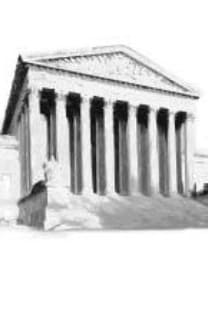Benedetto Croce’nin Felsefesinde Sezgi-İfade Özdeşliği Bakımından Sanatın Konumu
___
- CARR, H. W. (1917). The Philosophy of Benedetto Croce: the problem of art and history by H. Wildon Carr, London: Macmillan.
- CARUS, P. (1916). CROCE'S USE OF THE WORD "INTUITION." The Monist, 26(2), 312-315. Retrieved July 17, 2020, from www.jstor.org/stable/27900592
- CROCE, B. (1990). Estetica come scienza dell’espressione e linguistica generale: teoria e storia. Milano: Adelphi.
- CROCE, B. (2014, August 14). Benedetto Croce on aesthetics. Retrieved May 17, 2020, from https://www.britannica.com/topic/Benedetto-Croce-on-aesthetics1990551
- CROCE, B. (1921). History Its Theory and Practice. (J. E. Spingarn, Ed.). New York: Harcourt, Brace and Company
- CROCE, B. (1965). Æsthetic as science of expression and general linguistic, çev. D. Ainslie, The Noonday Press.
- CROCE, B., Bodei, R., & Fudemoto, H. (2016). Breviary of Aesthetics. Toronto: University of Toronto Press. doi: https://doi.org/10.3138/9781442684089
- DIMLER, G. R. (1963). “Creative Intuition in the Aesthetic Theories of Croce and Maritain”. The New Scholasticism, 37(4), 472-492. https://doi.org/10.5840/newscholas19633744
- DOORLY, P. (2019). Sanatta Hakikat- Niteliğin Dönüşü, çev. A. Çavdar, İstanbul: Ayrıntı Yayınları.
- DUTTON, D. (2017). Sanat İçgüdüsü Güzellik, Zevk ve İnsan Evrimi, çev. M. Turan, İstanbul: Ayrıntı Yayınları.
- HEGEL, G.W.F. (2019). Estetik Güzel Sanat Üzerine Dersler, çev. T. Altuğ, H. Hünler, İstanbul: Kırmızı Kedi Yayınevi.
- MOSSE, G. (1996). “Fascist Aesthetics and Society: Some Considerations”, Journal of Contemporary History, 31(2), 245-252. Retrieved May 3, 2020, from www.jstor.org/stable/261165
- PATANKAR, R. B. (1962). “What does croce mean by “expression”?” The British Journal of Aesthetics, 2(2), 112–125. doi:10.1093/bjaesthetics/2.2.112
- TUNALI, İ. (1973). B. Croce Estetik’ine Giriş. İstanbul: İ.Ü. Edebiyat Fakültesi Yayınları.
- VICO, G., Bergin, T.G., & Fisch, M.H. (2016). The New Science of Giambattista Vico: Unabridged Translation of the Third Edition (1744) with the addition of "Practic of the New Science". Ithaca: Cornell University Press. muse.jhu.edu/book/57749.
- ZISS, A. (2016). Estetik Gerçekliği Sanatsal Özümsemenin Bilimi, çev. Y. Şahan, İstanbul: Hayalperest Yayınevi.
- Yayın Aralığı: Yılda 2 Sayı
- Yayıncı: Bursa Uludağ Üniversitesi
Kayıp Göndergeler ve Dişil Eşitsizlikler: Etin Cinsel Politikasını Düşünmek
Benedetto Croce’nin Felsefesinde Sezgi-İfade Özdeşliği Bakımından Sanatın Konumu
Felsefenin Özünden Felsefenin Felsefesine: Dilthey’da Bir Dünya Görüşü Öğretisi Olarak Felsefe
Nietzsche’nin Bakışından Varoluşçuluk
Zhuangzi’nın “Varlığın Birliği Kuramı”nda Eşitlik İlkesi
Carnap’ın Mantıksal Doğruluk Çözümlemesi
Kurucu Belirsizlik Olarak Covid-19 ve İki Egemenlik Paradigması
Funda GÜNSOY, Mariusz TUROWSKİ
Aesthetics of Anaesthetics: Western Postmodern Attitude and Japanese Wabi-Sabi (侘寂)
Engin YURT, Sıla Burcu BAŞARIR
Tinin Devinirken Kendini Kavradığı Sahne: Hegel’in Düşüncesinde Usla Aklanan Tarihsel Süreç
The State as a Janus-Faced Structure: Anti-Paternalism and Pastoral Power
